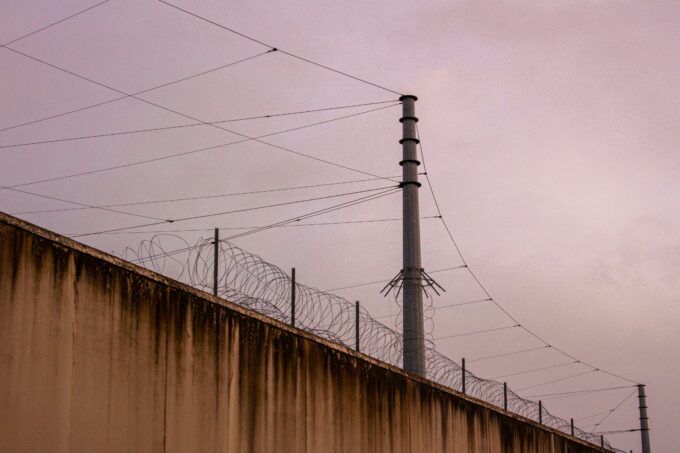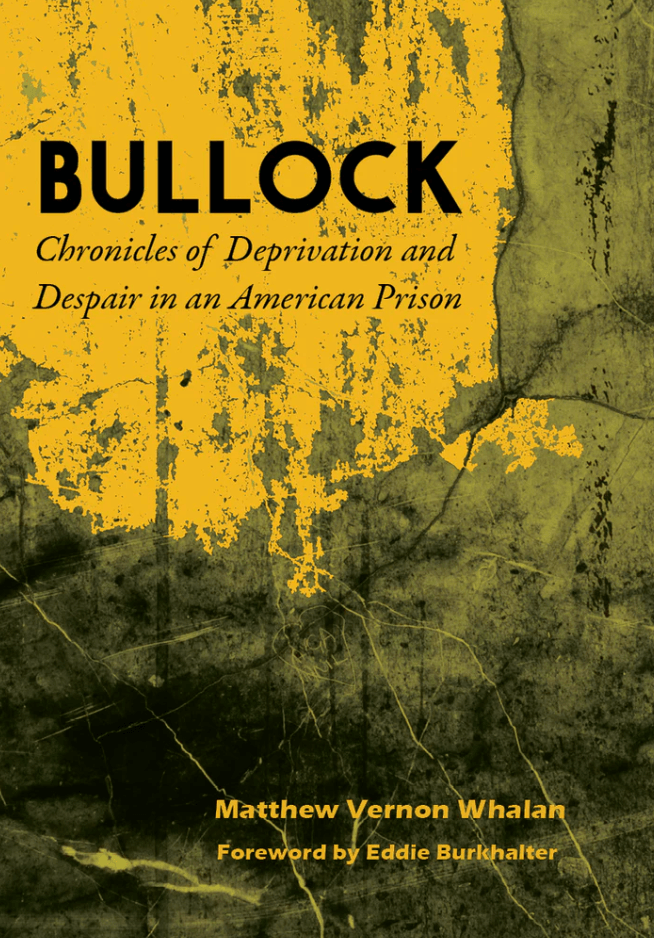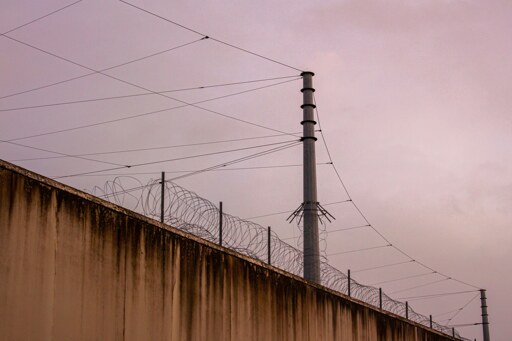
Image by Joshua Katt.
The following is the foreword to Matthew Vernon Whalen’s new book, Bullock: Chronicles of Deprivation and Despair in an American Prison.
There’s a certain kind of silence in Alabama’s prisons. It isn’t peace. It’s resignation. It’s the dull, endless quiet of men waiting for someone to care. For decades, no one has—not in the ways that matter. Matthew Vernon Whalan’s book is a rebuke of that silence, and to the system that has sustained it.
Reading this book I’m reminded of something that every journalist who’s ever covered Alabama’s broken prisons learns fast: time stands still in these places. Yes, the numbers get worse. The buildings crumble further. The drugs flow faster. The violence climbs higher. But the core problem is unchanged. Alabama continues to cage people in conditions the courts once called cruel and unusual—and still would, if they’d take another honest look.
Whalan doesn’t write in abstractions. He’s tracing a very real, very bloody line from the courtroom orders of the 1970s, to the body count we’re now seeing. The problems the courts identified back then—overcrowding, lack of classification, rampant violence, indifference to mental illness—are not just present today. They’re metastasized. 
Whalan examines the everyday living conditions of those ensnared in these inhumane conditions, lending a voice to those who have been silenced. He is not pretending to present a finished analysis or explanation of how these tragic realities are tied to so many others, which they most certainly are. Rather, this is a tightly focused and collectively narrated—using the words of the prisoners themselves—case study in neglect and dehumanization.
At the same time, it must be said, it is impossible to talk about the criminal justice system in Alabama without recognizing racial disparities in every aspect, from the makeup of the state’s elected leaders and courthouses to its overpopulated jails and prisons.
Black Alabamians were over four times as likely as white Alabamians to be arrested for marijuana possession, even though the two groups use marijuana at roughly the same rate. In seven Alabama jurisdictions, the arrest disparity was more than 10 to 1.
Alabama’s population is a little over a quarter Black, but more than half the people in our jails and prisons are Black. In May 2025, Black Alabamians comprised 54 percent of the state’s prison population, and the racial disparity continues in the state’s parole statistics. Between Jan. 1, 2021 and July 31, 2021 the Alabama Board of Pardons and Paroles denied parole for 77 percent of parole eligible white applicants but denied parole for 90 percent of Black applicants.
Perhaps it’s little surprise that, given those stark racial disparities, things are much the same among the state’s decision-makers. No Black person holds an elected statewide office in Alabama. White judges account for 154 of 192 elected circuit and district judges statewide, or 80 percent, despite whites making up 61 percent of the state’s population (2020 U.S. Census).
Of the 38 Black judges statewide, 22 are in Jefferson County, leaving just 16 Black judges across the remaining 61 counties. All judges on the Alabama Supreme Court, the Court of Criminal Appeals, the Court of Civil Appeals and the director of the Alabama Office of Courts are white. Just three of Alabama’s 41 Judicial Circuits are served by Black district attorneys, and 55 of 67 Alabama sheriffs are white. All judges on the Alabama Supreme Court, the Court of Criminal Appeals, the Court of Civil Appeals and the director of the Alabama Office of Courts, are white.
The result is that, like other U.S. states, Black people are disproportionately likely to be incarcerated in Alabama. While Black people make up 26% of Alabama’s resident population, Black Alabamians constitute just over twice that proportion—53%—of those incarcerated in its prisons. If this discrepancy appears less stark than that of many other U.S. states, this must be seen as a perverse result of the fact that Alabama, like many other Southern states, incarcerates a significantly higher proportion of its population. According to the Prison Policy Initiative, almost 1% of Alabama’s population are held in some kind of incarceration, be it jail or prison.
I’ve reported on Alabama’s prison system for years, and what I’ve seen—what Whalan lays out clearly—is not a broken system. It’s a system working as it was designed. A system built to discard lives. Alabama’s prisons have always been about punishment, not rehabilitation or redemption.
Whalan listened to these men who live in these horrors, and his book demands a reckoning. It forces readers to confront the shameful truth: that Alabama has had every opportunity to change and has chosen, time and again, not to. That we are closing the books on preventable deaths—hundreds of them each year—and calling that “justice.”
Matthew Vernon Whalan is doing what far too few have dared to do: drawing the through-line between what was and what is. He reminds us that history, especially here, is not past. It is prologue. It is policy. And it is people—incarcerated people and the communities they come from—who pay the price.
Read this book. Then ask yourself why we let this happen. Again.
The post Breaking the Silence of Alabama’s Prisons appeared first on CounterPunch.org.
From CounterPunch.org via this RSS feed


